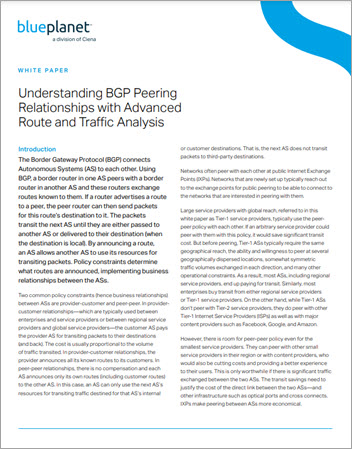Understanding and Optimizing BGP Peering relationships with Blue Planet
The Border Gateway Protocol (BGP) connects Autonomous Systems (AS) to each other. Using BGP, a border router in one AS peers with a border router in another AS and these routers exchange routes known to them. If a router advertises a route to a peer, the peer router can then send packets for this route’s destination to it. The packets transit the next AS until they are either passed to another AS or delivered to their destination (when the destination is local). By announcing a route, an AS allows another AS to use its resources for transiting packets. Policy constraints determine what routes are announced, implementing business relationships between the ASs. Blue Planet ROA helps network operators reduce transit costs and provide higher service quality by providing visibility into inter-AS traffic. Real-time operational monitoring and back-in time forensic analysis help Network Operations Centers (NOCs) manage service delivery proactively, and modeling capabilities enable engineers to accurately predict how proposed peering changes will affect traffic—thereby decreasing the chances of design errors or misconfigurations.

